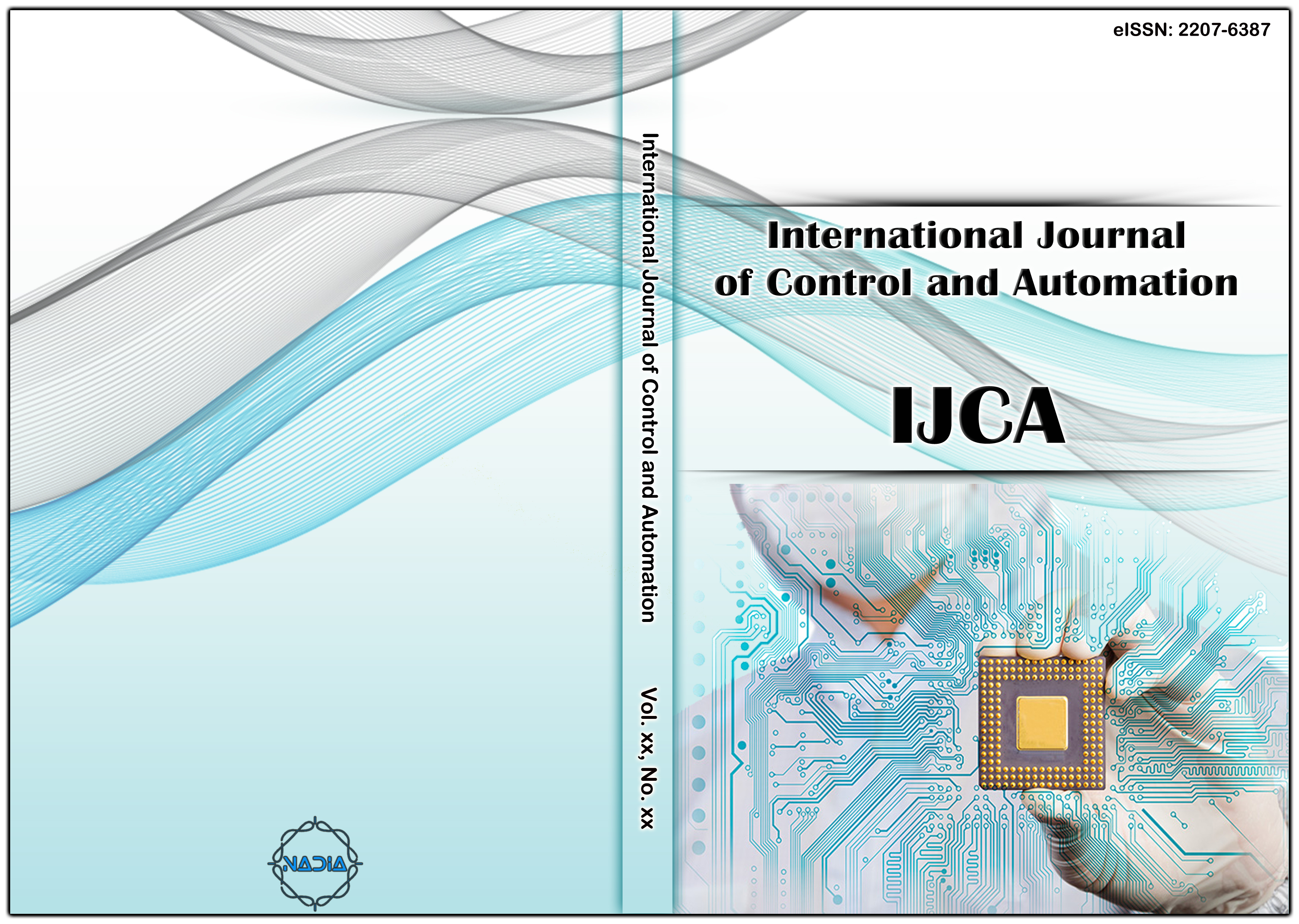Abstract:
5G network system is expected to have an exponential increase in terms of the number of small cell base stations due to finer cell segmentation than existing ones. Connecting all such base stations to a wired interface through optical cables, a conventional method, would be costly and time-consuming in the installation process, which leads to interest in building a wireless backhaul network system. To transmit a large amount of data in high quality through a wireless backhaul network, a frequency channel with wide bandwidth is required, hence millimeter wave (mmWave) band (30GHz ~ 300GHz) could be effectively implemented. Particularly, mmWave has following advantages: it is possible to reduce the size and weight of the related equipment including an antenna; high directivity of the wave makes it strong against the surrounding interference; it features strong security and easy frequency reuse. Based on these, this paper focuses on a slot sub-array antenna with WACF (Waveguide aperture-coupled feed) structure that can be implemented into a wireless backhaul network in which high capacity and Gbps data transmission is possible. A WACF 32 x 32 slot sub-array antenna that features broadband and high gain was designed and fabricated to be implemented into the V-band in the spectrum between 57GHz and 66GHz frequencies. The antenna is structured in a laminated form, composed of a radiating part (outer groove, slot, cavity), a coupled aperture, and feeds. Analytical test and simulation were performed using HFSS (High frequency structure simulator), which is based on the 3-D FEM (Finite element method). For the fabrication of the antenna, each layer of the antenna was first created using precision-controlled milling machine and then each layer was assembled after silver-plating with through conductive epoxy. As a result of analyzing the characteristics of the antenna in the mmWave dedicated anechoic chamber, the return-loss in the target frequency band was less than -10dB, VSWR < 2.0 and wide bandwidth ranged up to approximately 16%.
Keywords:
Antenna, Aperture, Bandwidth, Coupling, Waveguide
References:
[1] Faragher, John Mack, “Bungalow and Ranch House: The Architectural Backwash of California”, Western Historical Quarterly 32.2 (2001): 149-173.
[2] T. Zwick, D. Liu and B. P. Gaucher, “Broadband planar super substrate antenna for integrated millimeter wave transceivers”, IEEE Trans. Antennas Propagation 54.10 (2006): 2790–2796.
[3] Min Wook Kang and Yun Won Chung, “A Novel Wireless TCP for 5G Mobile Network World Journal of Wireless Devices and Engineering”, 1.1(2017):1-6. http://dx.doi.org/10.21742/WJWDE.2017.1.1.01.
[4] T. Seki, N. Honma, K. Nishikawa, and K. Tsunekawa, “A 60-GHz multi-layer parasitic micro strip array antenna on LTCC substrate for system on package”, IEEE Microwave Wireless Component Lett., 15.5 (2005): 339–341.
[5] Seyed Ali Razavi, Per-Simon Kildal, “2×2 Slot Element for 60GHz Planar Array Antenna Realized on Two Doubled-sided PCBs Using SIW Cavity and EBG-type Soft Surface fed by Microstrip-Ridge Gap Waveguide”, IEEE Trans., Antennas Propagation, 62.9(2014): 4564-4573.
[6] J. P. Webb, “Edge Elements and What They can do for you”, IEEE Trans Magnetics., 29.2 (1993): 1460-1465.
[7] A. Bagwari, J. Kanti and G. Singh Tomar, “Multiple Antennas Based Sensing Technique”, International Journal of Urban Design for Ubiquitous Computing, 4.2(2016):41-50. http://dx.doi.org/10.21742/IJUDUC.2016.4.2.06.
[8] Chan-Soo Park, “Characteristics Analysis of the CM and DM Noise Separator in EMI”, Journal of the Korea Academia-Industrial Cooperation Society, 17.5 (2016):49-55.
[9] M. Naveena Rama Krishna, M. Sivaji Ganesh, M. Prasanth Kumar Reddy, N. Venkatesh and K. Jagadeesh Babu, “A Dual-band Cross Shaped MIMO Antenna with Reduced Mutual Coupling”, International Journal of Communication Technology for Social Networking Services, 4.1(2016):1-8. http://dx.doi.org/10.21742/IJCTSNS.2016.4.1.01.
[10] R. Miniowitz, and J. P. Web, “Convariant-projection quadrilateral elements for the analysis of waveguide with sharp edges”, IEEE Trans on microwave theory tech., MTT, 39.3 (1991): 501-505.
[11] K. Ise, K. Inoue and M. Koshiba, “Three-dimensional finite-element method with edge elements for electromagnetic waveguide dis-continuities”, IEEE Trans., on Microwave Theory Tech. 39.8, (1991): 1289-1295.
[12] R. Gupta, A. Kalia, G. Gupta, A. Rajawat, S. Hak Gupta and M. R. Tripathy, “Performance Enhancement of an E-shaped Microstrip Patch Antenna loaded with Metamaterial”, International Journal of Wireless and Mobile Communication for Industrial Systems, 3.2(2016):9-16 http://dx.doi.org/10.21742/IJWMCIS.2016.3.2.02.
[13] J-Ming Jin, John L, Volakis, “Electromagnetic Scattering by and Transmission Through a Three-Dimensional Slot in a Thick Conducting Plane”, IEEE Trans. on A&P 39.4 (1991):543-550.
[14] H. Lee, S. Ryu, S. Ryu, B. Kim, “A development of Folded Dipole Antenna for 26.5 ~ 29.5 MHz Band for immunity test by portable transmitters on vehicle components”, International Journal of Energy, Information and Communications, 9.5(2018):1-6 http://dx.doi.org/10.21742/IJEIC.2018.9.5.01.
[15] Tae-Hyun Lee, Chulho Yang, “A Study on Optimal Shape of Stent by Finite Element Analysis”, Journal of the Korea Academia-Industrial Cooperation Society 18.11(2017) 1-6.
[16] Miura, Y, Hirokawa, J, Zhang, M, Ando, M. “A 45°Linearly Polarized Hollow Waveguide Corporate-feed Slot Array Antenna in the 60GHz Band”, IEEE Trans., Antennas Propagation, 60.8, (2012): 3640-3646.
[17] Per-Simon Kildal, “2×2 Slot Element for 60 GHz Planar Array Antenna Realized on Two Doubled-sided PCBs Using SIW Cavity and EBG-type Soft Surface fed by Microstrip-Ridge Gap Waveguide”, IEEE Trans., Antennas Propagation, 62.9(2014) 4564-4573.
Citations:
APA:
Kim, S.-Y. (2019). A Study on the WACF Slot Sub-Array Antenna. International Journal of Control and Automation (IJCA), ISSN: 2005-4297 (Print); 2207-6387 (Online), NADIA, 12(8), 11-20. doi: 10.33832/ijca.2019.12.8.02.
MLA:
Kim, Sun-yeob, “A Study on the WACF Slot Sub-Array Antenna.” International Journal of Control and Automation, ISSN: 2005-4297 (Print); 2207-6387 (Online), NADIA, vol. 12, no. 8, 2019, pp. 11-20. IJCA, http://article.nadiapub.com/IJCA/vol12_no8/2.html.
IEEE:
[1] S.-Y. Kim, "A Study on the WACF Slot Sub-Array Antenna." International Journal of Control and Automation (IJCA), ISSN: 2005-4297 (Print); 2207-6387 (Online), NADIA, vol. 12, no. 8, pp. 11-20, Aug 2019.
